BRAND MANAGEMENT
Brand management
Brand management includes all strategic and operational decisions related to a brand or a brand portfolio.
The communication strategy is the process that allows to coordinate all the actions in order to reach its communication objectives. Defining a communication strategy allows you to have an overall vision of these actions, to measure their effectiveness and thus to optimize your communication budget.
The visual identity or graphic identity is a set of coherent visual elements that allow the identification of a same entity through the different communication media that it emits. It expresses the company’s values, activity and ambitions through a graphic style specific to the company and is translated into signs, colors, shapes, texts and layouts. The graphic identity is declined on any support: documents, leaflets, material sign, but also websites or promotional products. It allows to recognize the entity that issues the document, whether it is a structure (company, institution, association), a brand, or a project.
The brand narrative is the coherent story you weave between facts and emotions that your brand evokes in the audience. In addition to giving your customers reasons why they should buy a product or service, companies need to start sharing the story behind their brand, why it exists and why it matters, consistently across all communication channels. Storytelling or brand discourse has become indispensable. It’s a must have, and what will ultimately maximize your company’s visibility, profit and impact. Treat it as a compass for your marketing strategy, and the result will be a brand that is both profitable and captivating.
A sound identity is a short melody or sound ambiance used to instantly recognize a brand or an organization. Music facilitates the identification of a brand and develops its value. It harmonizes the speech and tone of the company by creating an emotional added value. A strong brand has a rich sensory capital. Auditory branding helps to develop this perception to obtain adhesion.
CORPORATE COMMUNICATION
Institutional communication
The institutional communication gathers the whole of the actions of communication which aim at promoting the image of an institution or an organization with respect to its citizens, customers and various partners.
The purchase of advertising space can allow you to attract new customers likely to buy your products and your services thanks to the diffusion of an advertising message and to develop or reinforce your notoriety near your citizens, customers and various partners.
It includes all communication actions aimed at your investors and financial partners. The objective is to promote your economic and financial results. This is important for companies listed on the stock exchange or about to be, but it concerns all companies. It is about presenting your medium and long term financial perspectives as well as the state of your cash flow (financial balance sheets).
Crisis communication is the set of communication techniques and actions undertaken to fight against the negative effects of an event on the image of the company concerned or its products. Crisis communication requires rapid decision-making and the mobilization of a system (human and material resources within the company and among its service providers) set up as a preventive measure before a crisis occurs.
Internal communication covers all communication actions carried out within a company or organization for its employees. It depends on the human resources department. The objective is generally to promote the information, integration and support of the company’s employees.
DIGITAL COMMUNICATION
Websites &
Social networks
Digital communication defines the communication strategies and actions that are carried out on the web in order to transmit messages, values or results that will attract the attention of target Internet users and improve the visibility of a company.
Brand content is a creative genre in its own right, different from advertising. This type of content marketing combines a communication logic with the presentation of a traditional media offer. Unlike advertising, brand content is characterized by its editorial autonomy and the absence of a sales pitch or slogan. The emergence of new technologies and various other changes give brands the technical means to produce content (films, programs, reports) and to become media brands, by broadcasting them to a large audience, in order to make themselves known, sometimes without going through the traditional media.
Web development is a discipline that consists, through the use of web programming languages, in programming web sites or web applications (or mobile web) intended to be published on servers. Beyond the technical aspect of web development, user experience is the quality of the user’s experience in digital or physical environments. It is a notion that is becoming more and more common where, until recently, the notions of software ergonomics and usability were used.
Social media management is the activity that consists of taking into account and using the potential influence of social media to promote marketing activity, the commercial development of a company and the employer brand. It is the operational implementation of a social media strategy. The fields of social media management are numerous and their respective importance varies according to the field of activity.
Influencer marketing is the set of techniques that tend to use the recommendation or prescription power of influencers. In a way, it is the ability to create influencers or ambassadors for your brand.
In the beginning, influencer marketing mainly targeted active members of a community or from forums. We also worked with influential bloggers before social networks took over in digital communication.
In this world where influence is present on every platform, web marketing and communication in the broadest sense now rely on this lever.
PUBLIC RELATIONS / MEDIA
Press Relations & Media monitoring
Press relations consist of organizing a congenial dialogue between the company and the concerned public and setting up a specific program of relations with the media in order to generate and amplify the visibility of the companies.
Public relations is the set of communication methods and techniques used by companies or interest groups to inform on an internal and especially external scale. The aim is to promote the image of the brand and to convey a positive message to encourage good relations. Internally it serves to federate and consolidate the motivation of the work teams and externally it aims to attract the sympathy of the consumer and to act on the market by marking the trend.
The term media relations is sometimes used to emphasize a broader vision than just press relations. The use of the term media relations generally implies that we are not only addressing the “press” or traditional media, but also new media such as bloggers or other influencers on social networks. The shift from press relations to media relations reflects the fact that journalists no longer have a monopoly on information and visibility and that certain influencers, experts or other celebrities can now benefit from a visibility and influence that is sometimes equal to or even greater than that of press titles. The transition to media relations takes into account the phenomenon of the media individual.
Media monitoring is a strategic monitoring tool to measure the impact of your actions and those of your competitors and to keep you informed of the state of your market.
Among the major deliverables of media monitoring is the press review or media panorama that you then distribute to your employees according to your own graphic charter. Media monitoring also provides you with performance indicators to adapt your communication strategies and prepare your future initiatives through media analysis and assessment. It also allows you to stay in touch with your reputation and offers you the possibility to anticipate a media crisis or, if necessary, to respond quickly and pertinently thanks to the crisis watch.
Online reputation management, also called e-reputation, is defined by the influence that information found on the Internet has on the perception of people, brands and products. It involves media monitoring, detection of relevant content, analysis of what is said about the company and eventually interaction with consumers. Negative comments can seriously affect a company’s reputation, so online reputation management is becoming an important part of corporate communication.
EVENTS
Conceptualization
& Implementation
Event management is the set of techniques and processes for the creation or organization of customized events for your external and internal needs in order to increase media visibility. Regardless of its size, each event has its importance.
.
Definition of a concept and planning of all the coordination actions of the project and the communication actions accompanying its various stages.
Definition and optimization of a budget based on the concept proposal.
Implementation of the project process, from the conceptualization phase to the operationalization.
Management of all stakeholders and deployment of the operational phase.


